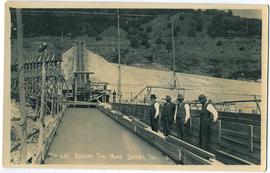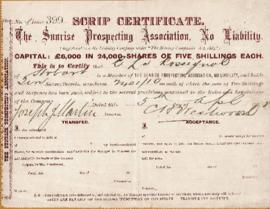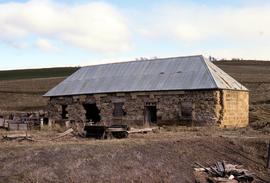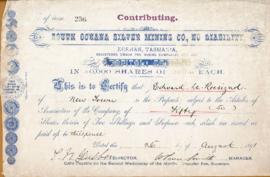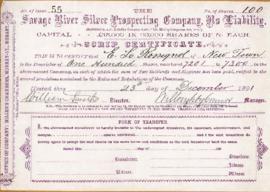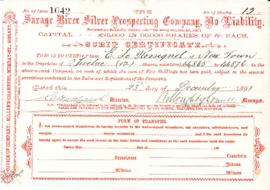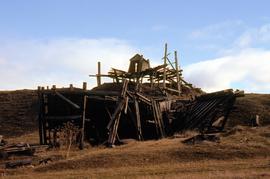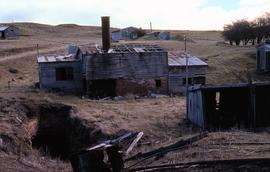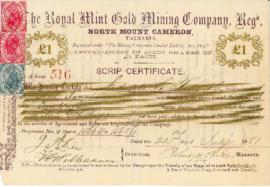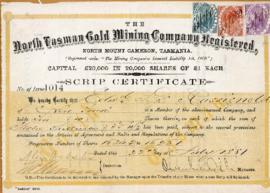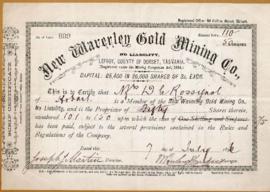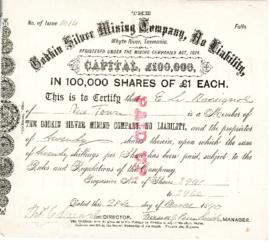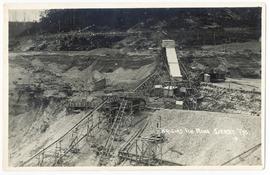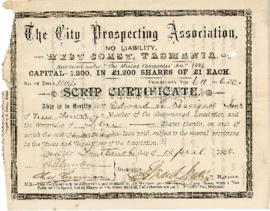Typed copy of transcript made by Ronald E. Smith. This is a very detailed diary, noting daily work on the farm, seeds received and planted, stock sold or bought, orchard apples and other fruit, water wheel, water and drainage, trial of triangular troughs, seed drill, mowing machine. He tried a salt solution to treat the destructive parasite dodder on lucerne. As well as sheep, feed crops and orchard fruit, he tried angora goats. James Smith also noted daily payments made or received, letters sent, visits and visitors, including neighbours, E. N. C. Braddon and family, John Henry, Rev. Fairey, Col. Crawford and many others, and he even noted books or periodicals and other items borrowed or lent. His regular attendance at chapel on Sundays, usually the Congregational Chapel but sometimes the Independent or Wesleyan Methodist Churches or occasionally the Church of England, was recorded with the name of the preacher.
Prospecting trips and visits to mines are frequently mentioned and he had a laboratory built at his home. Other miners and prospectors visited to consult him, including Capt. L. Herbert Noyes of Mt. Bischoff, James Hancock and another James Smith from the Barrington Copper Mine.
James Smith took part in local activities and politics, including the School Board and the North West Railway League. He resigned from the Town Hall Committee over a proposal to establish a museum and open it on Sundays. He liberated salmon trout fry in the Forth and other rivers between 1887 and 1890. He "counselled Braddon not to be too extreme in advocating reform of the Legislative Council" (Dec. 1880).
There are occasional references to his wife and family: his wife was "delivered of a daughter about noon" on 23 September 1878, his wife and the children drove to Leven beach, the boys helped with farm work and in February 1891 Mrs Smith and her daughters went to a demonstration at the Town Hall on fixing photographs on glass by a Mrs Abrams.

